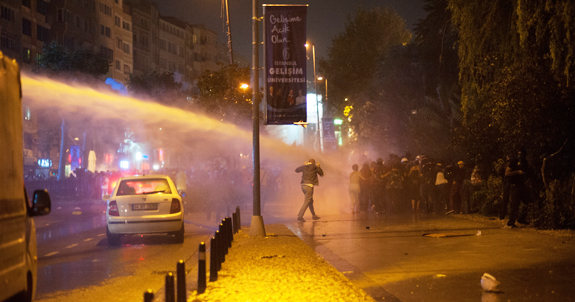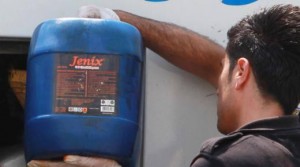
Photo by Mstyslav Chernov (Self-photographed, http://mstyslav-chernov.com/) [CC-BY-SA-3.0 (http://creativecommons.org/licenses/by-sa/3.0)], via Wikimedia Commons
The addition of a gas to the water cannons during the weekend’s police crackdown on the Gezi Park protests has stirred debate in Turkey, following remarks from experts about the legal basis of its use and the harm that it may cause to the body.
The substance, which was photographed as police officers added it to water cannons, is “highly dangerous,” according to the doctors, while lawyer Ömer Kavili described the use of this substance as a “crime against humanity.”
EarthDesk first reported on the Gezi Park demonstrations in a June 4 post by Caroline Craig. Local citizens began a peaceful demonstration on May 28 to protest plans to demolish Taksim Gezi Park, a small urban park in Istanbul, and replace it with a shopping mall. The demonstrations grew to tens of thousands of citizens across the nation even as Turkish Prime Minister Recep Tayyip Erdogan resorted to “excessive and indiscriminate force against peaceful protestors,” according to Amnesty International.
The Hürriyet Daily News reports that the Jenix and water solution:
 Causes “first degree burns” and causes damage to the skin similar to the effects of tear gas on respiration, according to Dr. Ümit Ünüvar, a member of the Forensic Medicine Experts Association.
Causes “first degree burns” and causes damage to the skin similar to the effects of tear gas on respiration, according to Dr. Ümit Ünüvar, a member of the Forensic Medicine Experts Association.
“Keep away from children. Do not spread over a broad area. Do not spill over canalization, underground or surface water. Prevent contact with skin and eyes,” the warning on the plastic can reads, adding that skin should be washed with water in case of contact.
Istanbul Governor Hüseyin Avni Mutlu said a chemical was added to the water cannons to create “medicated water.” But a Jenix official contacted by the paper said his product:
“Is not directly added to the water but it is put in a separate tank, the police can manage its amount while using it,” . . . adding that it has become controversial as the police “might have used it over the dosage.”









